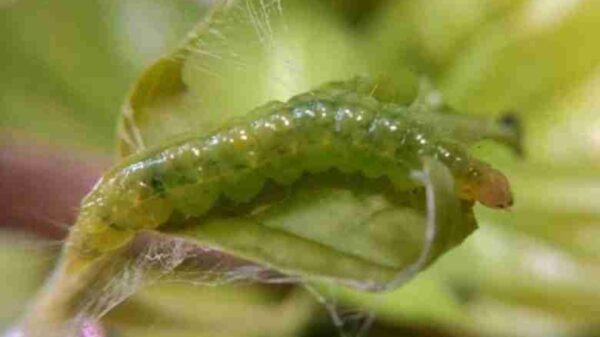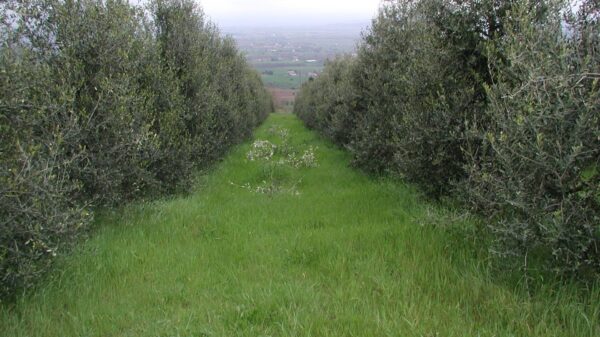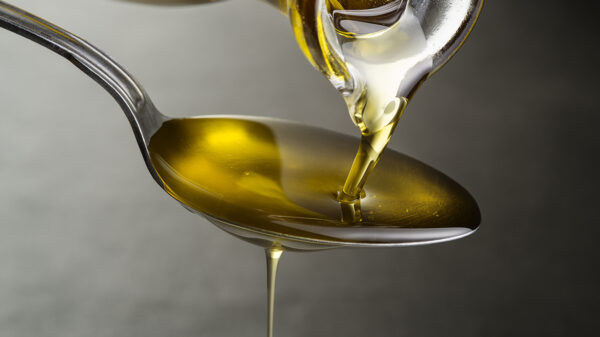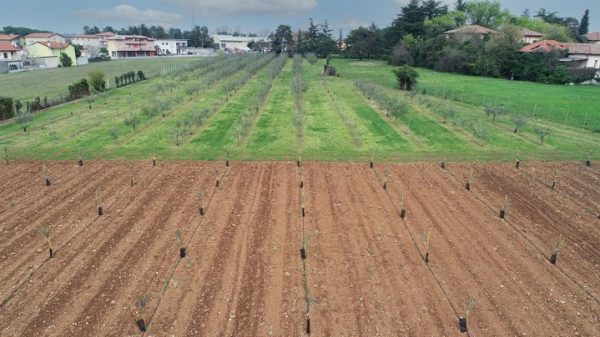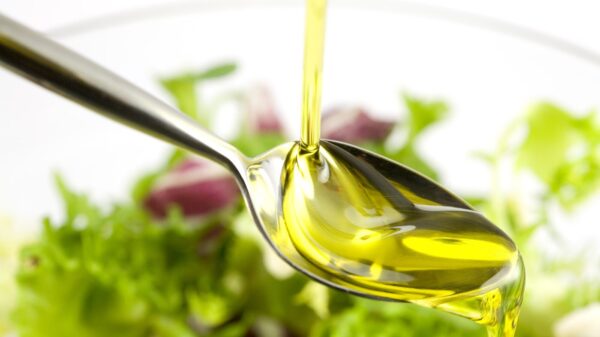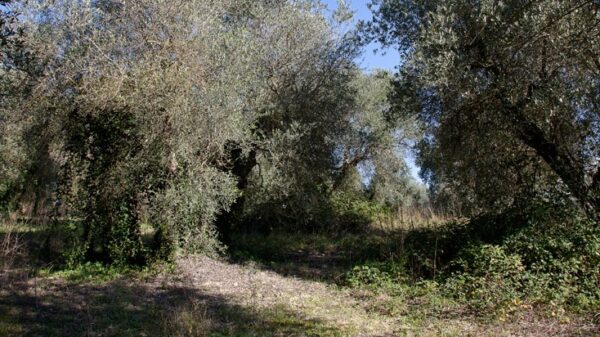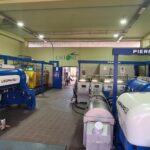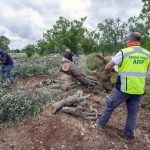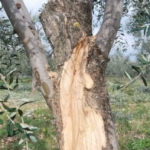The most frequent manifestations of frost damage – A first manifestation of frost damage is the necrosis of the petiole tissues which causes the partial or total fall of the leaves from the tree. It manifests itself at temperatures of -6, -7°C. When the damage is greater and affects the branches, the leaves remain on the tree even if completely browned, as the plant does not have time to promote their detachment.
I 1 or 2 year old branches they can suffer the cracking of the bark throughout its entire thickness or limited to the external portion. The damage is due in particular to rapid transition from low night temperatures to mild morning temperatures, or to ice formation resulting from the absorption of water by leaves and twigs left in contact with rain, snow or fog for a long time. These alterations cause rapid dehydration of the tissues and therefore the death of the affected branches or branches.
Browning of the bark in plaques extending over more or less large surfaces occurs in branches with heavily damaged cambia and woody vessels, in which the supply of water and nutrients is lacking, so they gradually deteriorate until complete devitalization.
They can remain near the necrotized areas and along longitudinal lines vital areas of cortex and cambia which give rise to ropes that allow the distal areas of the branches to be fed, however these areas of vegetation cannot be considered valid for ensuring a solid production base. Again, the alternation of low and medium temperatures determines a different expansion of the tissues; that is, the external tissues of the trunk and branches increase in volume in the presence of low temperatures. When the peripheral portions heat up, they reduce dilation and cause a different tension between the layers of the bark, causing the bark to slide over the wood in correspondence with a layer of cells that are particularly rich in water or have the capacity for rapid water imbibition. This action is carried out in all olive trees and in the presence of inelastic bark there are deep vertical lesions, which are evident on some sensitive cultivars, on adult plants with rigid bark and on trunks damaged by previous frosts or with wounds that have not yet healed. In young plants and in cultivars with more elastic bark, these alterations do not appear.
Il damage to woody vessels and cambia it is one of the most widespread. It consists in the necrotization and devitalization of the last woody circles which are literally disintegrated. In this action a large part of the change cells are damaged. Depending on the extent of the damage, this necrosed circle can be continuous, or limited to sectors, in fact some xylem rays which connect through the cambia to the cortical ones often remain intact; these elements are the origin of new tissues that from this moment begin to develop to re-establish a connection between bark and vital wood. At the same time, groups of cells or a chain of new elements of a suberous nature differentiate in the cortex to isolate the deteriorated portion and to safeguard the areas that are still alive. The recovery can affect only one sector, in this case the remaining part deteriorates starting from the bark which darkens, the underlying wood also dies and is easily invaded by the fungi responsible for decay.
Therefore all branches and branches that do not have cracks can, within a certain limit, overcome wounds and restore the activity of the plant. If the cortex has undergone a series of tissue lacerations and necrotizations in several places, any recovery action is lacking and it takes on a reddish-brown color until complete necrotization with the consequent death of the branch or branch to which it belongs.
Recovery Methods – Defoliation affects the formation and development of flower buds; if it is kept within 20-25% it can cause barely perceptible effects, at higher percentages it reduces flowering to the point of canceling it.
1) Plants that have only had one slight defoliation they must receive normal treatment, first eliminating the branches damaged by the cold, then pruning must be carried out in such a way as to give the foliage the right thickness and before the plant begins budding, to avoid unnecessary dispersion of the substances of reserve.
2) When instead the defoliation is around 80-90% and the branches are largely valid, we will take advantage of a reform pruning by immediately removing the supernumerary branches, moving towards a structure that provides good lighting of the foliage and facilitates cultivation operations, including mechanical harvesting. Overall, pruning it will be energetic.
3) When the defoliation is 70-80% cWith less damaged branches concentrated on the tops of the branches, these must be vigorously thinned out, the branches and branches with cracked bark are eliminated. The hair will be able to reform in a balanced way.
4) When i 1 year old branches and 2 year old branches have bark with widespread and deep cracks, they are destined to dry out quickly. The reconstitution will have to be done on the main branches. In this case, those that are most suitable in terms of shape and number will be chosen, lowering the top to allow a more uniform covering of vegetation along the entire axis. If the operation is carried out towards the end of April, the beginning of development of the adventitious buds will be able to confirm the validity of the branches on which the reconstitution is carried out.
5) If the defoliation is complete and the bark of the main branches and trunk has remained intact, but in some areas of depression it has detached from the wood, (detectable by the hollow sound that occurs when tapping the branch), even if reconstitution on the main branches is conceivable, it is best to wait for the start of vegetation to check which organs remain fully vital. Only then is it convenient to carry out restructuring pruning, trying to cut not on the terminal areas that have shown signs of revegetating, but further down, so as not to leave partially necrosed areas. The operation must be carried out in May.
6) When I am there cracks on the main branches and trunks, the epigeal part is compromised and a decision can be made immediately, i.e. cutting the log or eradicating it. For plants damaged at different levels, if the form adopted has not proven to be suitable, it is advisable to proceed with reforming the plant. One of these concerns the replacement of the monocone with the vase shape. The cutting of the main axis at 1,30-1,40 m is the starting operation, from which the 3-4 best positioned suckers will be chosen for the formation of the main branches. For log cutting it is necessary to remove the stump and then cut it about a decimeter below the ground level, to remove the devitalized areas and to promote the development of the suckers from the lower and outermost ovules of the stump. Upon completion of the operation it is necessary to eliminate any other decayed portion of the stump.
(Taken from: PRODUCTION TECHNIQUES IN OLIVE GROWING – International Olive Council)
Browse for free l'Olivo News click , here
